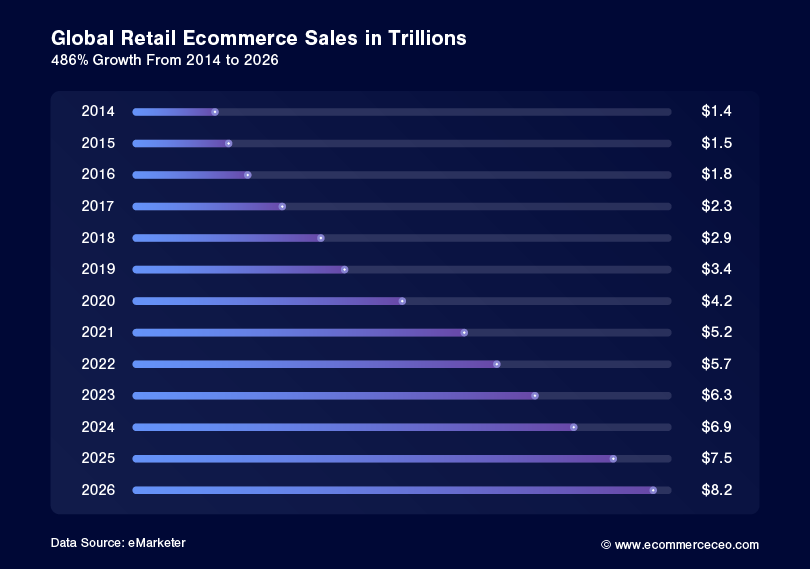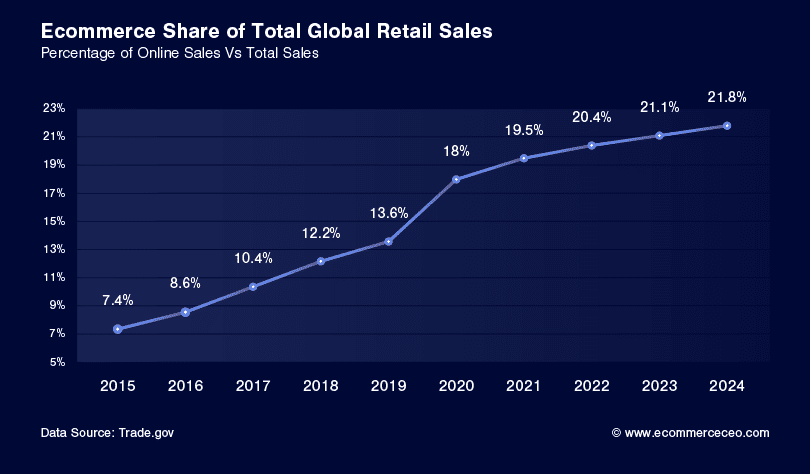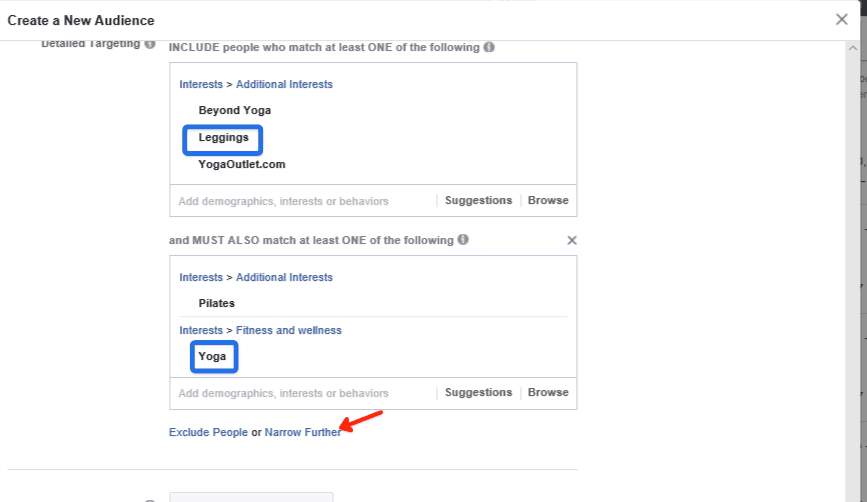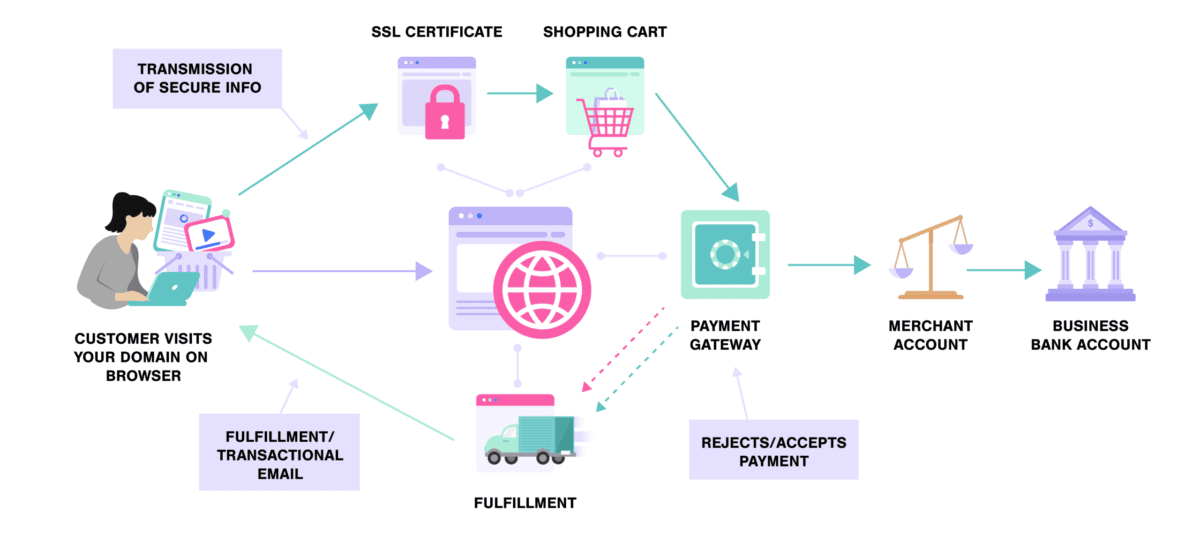The ecommerce business industry is exploding. As numerous brick-and-mortar stores that have been temporarily closed may never open again, many are choosing to resort to e-commerce.
However, this requires shifting payments to an online system and frequent website maintenance, often involving a reliable service provider.
I’ve been in retail since 2005. I’ve opened physical stores, launched profitable websites, and marketed small and large brands online. The amount of interest in ecommerce right now is unprecedented.
Shopping online was a convenience and a luxury, now – it’s a necessity. The online businesses that I work with can’t keep enough products stocked. Ecommerce is projected to grow over 400% this decade.

A lot of folks want to know how to start a small ecommerce business. If your goal is to make a quick buck – that’s all you’ll do. The goal should be a scalable, profitable business that lasts. You must have a long-term vision for building an asset that brings true value to the market.
Online retail is a booming business, growing steadily at 8%. But I’ve seen too many businesses struggle to get traction. It’s taken me years to learn everything on this page.

Use the information here to set up your ecommerce store, protect yourself legally, organize your finances, market and sell your product, and start building your store.
There’s nothing more rewarding than starting a business from nothing and watching it grow. You build it up, and no one can take it from you.
Building an online business takes more than choosing a brand name, writing product listings, and selling products online. Even the best business ideas can flop if you aren’t driving enough traffic to your site. Just starting out? Check out our ecommerce learning center.
Step 1: Research Ecommerce Business Models

Beginning your research is the first critical step. Don’t operate off of a hunch. Growing any online business is an investment. Treat it as such.
It’s not free to start an ecommerce business. Some businesses require more startup capital than others, which is why your business model matters. We’ll cover more of those costs and what you can expect to spend later.
There isn’t a single model that works for everyone. Service-based business, software, digital product sales, and physical products are just the beginning.
Before deciding what to sell online, you must understand the available ecommerce business models. It’s not rocket science, but impacts your business’s legal entity status. Let’s take a brief look at each one.
- Dropshipping: Partner with manufacturers and fulfillment centers to start an online business selling existing products without the need to carry inventory. But if you want a real, sustainable competitive edge, you need your own products. Print-on-demand is an option because it allows you to create custom products but still uses dropshipping. Check out our dropshipping business ideas.
- Wholesale Retail: With this approach, you buy products in bulk at a discount and then sell them at retail prices. It’s best for people who want to build a brand and have more control over the product. But retail arbitrage requires more time and effort than dropshipping since you’re responsible for manufacturing, packaging, and shipping products.
- Private Label/White Label: Using this model requires a much larger upfront investment because you’ll need to purchase inventory in bulk alongside warehouse space to store the product. Check out these private-label products to kick-start your idea.
- Selling on Amazon: Using Amazon means you’re selling products alongside countless other third-party sellers. You must create an account and pay a commission for each sale. In exchange, you won’t have to sell on your website unless you want to. And I think you should. Why? Because it’s difficult to build your brand in a marketplace like Amazon or eBay.
When choosing your business model, consider your target audience, industry, and goals. Each model has advantages, so aligning your choice with your unique business vision is essential. Are you going to take the b2b or b2c route?
Also, consider where you want to sell.
Do you want to start your own Shopify store, or do you want to sell on Amazon? Of course, you can do both, but marketing will be different. You can even skip selling products yourself and become an affiliate marketer. You should also study examples of successful ecommerce businesses before diving in.
Step 2: Start Market Research

It pains me when people email me their ecommerce site, and it’s filled with hundreds of products, dozens of categories, and no real focus.
Unless you have a massive budget, you can’t be the next Best Buy or Amazon. To run a profitable ecommerce store, you have to niche down.
Choosing your ecommerce niche is the most important step in opening your online business. Start this process by identifying successful companies already working in this space.
Ensure that the area is competitive – an absence of competition usually shows no market.
However, don’t pick an overly crowded niche and skip anything dominated by major brands. If you’re having trouble choosing what to sell online, drill down further on what you want to do – the more specific you are, the less competition you are likely to face.
Niche-ing down also gives you the benefit of having a lot of “shoulder” niches related to what you do, but not identical. You can work with business owners in those niches to cross-promote, become (or acquire) an affiliate, and grow your clientele.
Ensure that your product addresses a pain point in the market. The more niche your solution, the better. Consider following your personal or professional passion and aligning your product with your values and beliefs. Leverage SEO and keyword research tools to discover frequently searched products and analyze competitors.
Using Data from Google
- Keyword Planner: This is a great way to determine the relative difficulty of ranking for various keywords in your niche and to get an idea of how many people are searching for things related to what you want to sell.
- Google Trends: You can use this free tool from Google to see if interest in your niche is increasing, decreasing, or staying about the same. If it’s dropping like a rock, you might want to reconsider. If you need some ideas, check out this list of trending products.
- Exploding Topics: Think you’re on the right track to the next big thing? Search anything here and find out if you’ve missed the boat or still have time to jump in.

Pick a product category with a minimum of 1000 keywords and focus on a blog niche that does well in social media, where publishers in the area are affiliates on Amazon. If you can nab a few affiliate marketing opportunities, you won’t have to worry about shipping as much product, but you can still make a profit.
Using Data from Amazon
Using Amazon research can also help you get an idea of what’s popular and what your competition would be like if you used that as a sales channel. The most popular options are:
- Helium 10: This tool is like a treasure map, leading you to the best products you can sell. How does it do this? It looks at what people are searching for on Amazon. So, if lots of people are searching for “sustainable water bottles,” it’ll tell you that might be a great product to sell. It can also help you understand how tough the competition is for each product.
- Jungle Scout: It helps you find winning ideas that are high in demand but low in competition. It’s pretty cool because it also gives you estimated sales and revenue for each product. So, you get a good idea of how much money you could make.
- SEMRush: Formerly known as Sellzone by Semrush, these apps have now navigated to the Semrush app center. As a Semrush user, you’ll have access to tools that not only make it easier to conduct product research but also listing alerts, Amazon SEO, PPC optimization, listing quality checks, and more. This is especially important if you want to sell on Amazon – either exclusively or as part of your multi-channel strategy.
Step 3: Validate Target Market and Product Ideas

Now that you’ve identified a niche and business model, you might be tempted to hunt for products to sell.
Don’t. Before you think about products, think about competitor research. Try to understand how your competitors are getting traffic, how they are making money and who they are selling to.
You can’t expect people to buy your product if you don’t know who you’re selling to.
Using Facebook For Market Research
Fortunately, Facebook makes it easy for us to find your target customer online. Specifically, know exactly how many people you can target. You can drill down to get very focused numbers and detailed demographics.

I call it a “targetable target audience” – it’s a bit of a funny term, but you’d be surprised to know that most entrepreneurs do not know how many people are in their target online. You may have to go a little broader if you want a brand targeting hardcore triathletes who enjoy mountain biking. You can’t build a business if your main audience is only 100K people.
Once you’ve identified the image you want to project and the customer you want to cater to, it’s time to come up with product ideas. I suggest starting with one – you’ll invest less initially, and if you want to offer more, you can test the waters with affiliate marketing.
In the example of an organic seed company, you could find popular organic products on Amazon and create content to send traffic to those affiliate products. If something catches fire, you can consider making your own brand of that product. If you’re not 100% sure what to sell, you can use affiliate marketing to validate your idea. Product research is something you can’t skip.
Sourcing Products
If you take the physical product route, you must research manufacturers and find a reliable supplier. I recommend Alibaba for this, as it’s the world’s largest online market for sourcing products. You can find pretty much anything here, and if you have a product idea but don’t know how to make it yourself, chances are somebody on Alibaba does.

When considering a manufacturer or supplier, check customer reviews and shipping times. Shipping from China takes 2-8 weeks, depending on the company you use.
Before you invest in the product, though, evaluate it carefully. Even if you choose a dropshipping model, you want to test it carefully and get a feel for the product so you can identify potential problems and prepare customer service scripts to answer common questions.
Part of validating your idea is to determine the profitability. Conduct a thorough financial analysis to determine if your idea can and will make money. It’s not just about your break-even point and profit margin (more on that later). Can you find suppliers that meet your pricing? What happens if your supplier falls through? Is there a backup option?
Step 4: Form Your Company & Brand

If you want to start a successful business, you need a brand that connects with your persona. Identifying your persona makes building an ecommerce brand easier. You might avoid girlie colors and images if you sell products to corporate businesswomen interested in living a sustainable life.
But before you set up your store and delve into the nitty-gritty of establishing a brand, you’ll need to take some basic steps, including obtaining a business license.
Register Your Business
Choose a business name and register your company. When it comes to selecting the legal business structure, there are several factors to keep in mind. You need to consider things like liabilities, tax status, and more. It’s advisable to consult professionals like CPAs or business attorneys who can provide valuable guidance tailored to your specific needs.
I recommend filing an LLC with an S-Corp election. There are legal protections and tax benefits for incorporating, so don’t skip it.
Pick Your Store’s Name
The name of your site and the legal name of your business doesn’t need to be identical, but keeping them consistent has its benefits. Make sure whatever you choose fits your niche – you don’t want to pick a brand name at the last minute.
Get Your Business Licenses
If you’re unfamiliar with this process, the Small Business Association has plenty of resources to help you get started, including a mentor-protégé network and courses on business basics. Look actively for mentors – their advice can be priceless, even for little things like acquiring business licenses. One of the smartest decisions I ever made was finding someone to show me the ropes.
Get Your Employer Identification Number
You’ll need an Employer Identification Number (EIN) to open a business bank account and file your business taxes next April, even if you don’t plan on having any employees. Your EIN is a bit like your business’s social security number: it’s a unique number that identifies your business and helps you file important paperwork.
Apply for Business Licenses and Permits
Operating an online business does not exclude you from needing certain business licenses or permits. Check with your city, county, and state to see what sorts of sales tax licenses or home business licenses you need, and get those approved before you start operating.
Find the Right Vendors
You’ll have a lot of competition selling products online, so it’s in your best interest to find the best quality and best prices for the products you sell or materials you use to create your products. Shop around until you find a vendor you want to do business with long-term – this includes your ecommerce software (your “shopping cart”). Think scalable from the start.
Logo Creation
Don’t fret over it too much, but do make sure that it is not in use by another company in your niche. Logo design doesn’t have to be terribly original, however (and really shouldn’t).
Any ecommerce company needs a brand identity. It’s what distinguishes your company from the rest and helps you build an audience. From your website design to the way you communicate with potential shoppers, your brand identity should be reflected in everything.
Get Visual
Consider your brand’s colors, the imagery you’ll use, and the typeface or fonts you’ll employ carefully. If you’ve got the budget, you might want to hire a marketing firm to create a design brief for your company. If not, you can create your own. Just keep it consistent and read marketing tips designed to help build your brand.
Consider Your Unique Selling Proposition
To really differentiate your business from competitors based on factors like price, quality, style, etc., you need to position your product or service with a unique selling proposition (USP). What makes your business different from the competition? Do you operate with eco-friendly practices? Are you a minority-owned business? Highlight how you’re unique however, you can, especially in the value you offer.
Step 5: Finalize Your Startup Business Plan

By now, you should have a great idea of what your business will look like. You have your audience, your product niche, and your brand name.
Now is a good time to step back and put your business plan on paper to determine your startup budget, loan needs, and monthly expenses. We even have a template you can use.
Financial Management
The most important aspect of a business is the financial one. Figure out your break-even point, both in unit sales and duration (in months). Any real business is an investment of resources. In fact, that was one of the first things I learned in MBA school. A CEO’s role is to take resources and turn them into a return.
Yet, I am sad that many entrepreneurs don’t take the time to project their revenue and expenses. If you can’t figure out your profit margin, you will fail.
The business planning phase is also when you want to iron out details like your staff, product sourcing, logistics, and marketing budget.
What You Can Expect To Spend
Your business model will determine your budget. For example, if you plan to manufacture a custom product, it will be way more expensive that dropshipping or print on demand.
| Dropship / POD | White Label | Private Label | Digital Products | |
|---|---|---|---|---|
| Business Startup Costs | $500 – $3,500 | $500 – $3,500 | $500 – $3,500 | $500 – $3,500 |
| Technology Costs | $1,500 – $8,500 | $1,500 – $8,500 | $1,500 – $8,500 | $1,500 – $8,500 |
| Marketing Costs | $2,000 – $20,000 | $2,000 – $20,000 | $2,000 – $20,000 | $2,000 – $20,000 |
| Product Costs | $0 | $500 – $12,500 | $10,000 – $100,000 | $0 – $2,500 |
| Total Estimated | $4K – $32K | $4K – $32K | $14K – $132K | $4K – 35K |
Make sure you understand all the available financial resources available to you. And learn the basics of accounting and bookkeeping, even if you hire someone else to manage your books.
You’ll want money for things like:
- Business Startup Costs: This includes things like filing your LLC, business licenses, securing your domain, setting up your email, creating your logo and market research.
- Technology Costs: Make sure you have the money to account for website hosting fees, ecommerce platform and software subscription fees such as marketing automation.
- Marketing Costs: Allocate funds for various marketing channels, such as social media advertising, SEO, PPC campaigns, email, influencer collaborations, and other promotional activities that align with your audience and business goals.
- Product costs: If your business requires inventory, implement proven inventory management strategies such as just-in-time (JIT) inventory, regular inventory audits, forecasting and demand planning, optimizing reorder points, and leveraging data analytics to identify trends and make informed inventory decisions. These strategies help minimize excess inventory costs while ensuring adequate stock levels to meet customer demand.
You’ll also want to account for:
- Managing seasonality: During peak seasons, plan additional funds for increased inventory, marketing efforts, and potentially hiring temporary staff. Adjust your budget and focus on cost-saving measures during slower periods while maintaining essential operations. This is a bit of a guessing game until you have historical data available, so use market research as a starting point.
- Returns management: Set aside enough funds to fulfill return orders. Of course, how much this is depends on your industry and return rates, but you should always plan to set aside a percentage of your total revenue for this.
Once you have historical data to review, you can adjust accordingly. As you grow and consider hiring staff, you’ll need to plan for how many people you’ll hire and what you’ll pay them. Hiring contractors is less complex than hiring employees, but you’ll want to consult a lawyer about that.
Once you know how much money you’ll need, you may want to consider funding or a loan.
Inventory Management & Fulfillment
Many entrepreneurs steer away from selling physical products online. You don’t need to store products in your garage to sell online. You can utilize fulfillment centers to handle shipping and fulfillment for you. Until you reach that point, you can use shipping software to ship items yourself.
Experts in ecommerce warehouse management, like ShipBob, will store your inventory for you while they utilize their warehouse space to ship products. Once you have a lot of assets tied up in inventory, you’ll need insurance.
Inventory management software will help keep your business organized, especially when dealing with a large inventory. But I wouldn’t recommend it to beginners. Keep it simple when you start. Order products from the manufacturer and have it sent straight to the fulfillment center.
Make sure you iron out logistics before building your store. Even if you are dropshipping, you must know where your inventory is coming from.
Plan for Your Product Lifecycle
Consider the expected lifecycle of your products – the time from when they are introduced to when they naturally phase out.
This knowledge will allow you to make informed decisions and develop a comprehensive plan for your business. By knowing the lifecycle of your products, you can effectively manage your inventory, identify opportunities for product improvement or innovation, and implement targeted marketing strategies.
For products that have a longer lifespan, you can focus on building brand loyalty and expanding your market reach. Conversely, for products with a shorter lifecycle, you can plan for their replacement or explore alternative revenue streams.
Step 6: Set Up Your Online Store

Once you’re officially a business owner, that’s where the fun really starts. Creating your online store can be fun, but stressful.
There are a lot of moving parts when it comes to an ecommerce website, but I’ve broken it down here.

Select Your Ecommerce Platform
Once you have settled on the design that aligns with your vision, ensuring compatibility with your chosen ecommerce software is essential. The decision may seem overwhelming with countless ecommerce platforms available (headless, cloud, open source).
Whatever design you choose needs to be compatible with your ecommerce software, too.
We put together reviews and comparisons to help you pick the right one. We’ve done a ton of research, and we recommend Shopify for most businesses.
Not a fan of Shopify? There are a ton of alternatives. Take the time to evaluate crucial factors, such as:
- Your web developer skills and ease of use. You don’t have to be an expert to create an ecommerce website, but some technical skill helps.
- Themes and templates
- Payment gateway compatibility
- SEO-friendly features, particularly with Shopify, because Shopify SEO is a bit different.
- Support for a customizable domain
These considerations will help you select the right online store builder that meets your specific needs and preferences.
While the prospect of hiring a costly “CRO Expert” or development company may arise, there is a more budget-friendly alternative. Consider utilizing a theme that aligns with your chosen platform.
Many themes can be obtained for a small fee of around $100, depending on the platform’s offering. These themes provide a cost-effective solution to achieve a visually appealing and professional-looking storefront without breaking the bank.
There are lots of themes for BigCommerce, Shopify, and WooCommerce. Booster Theme may be a good option if you’re looking for a powerful Shopify theme to help turn visitors into buyers. It includes marketing tools that would help you save $281/month on apps. Booster Theme includes integrated apps, conversion-optimized designs, and loading speeds you can’t find in any other theme.
Ecommerce Site Design
To truly showcase your products, you must also focus on other crucial aspects besides design. You must be clear about what you sell user experience, use simple CTAs, and keep your store well-structured.
Make sure you have thought about the different page types you need a design for, and also see how those pages look on mobile.
Using high-quality imagery and showcasing user-generated content can improve your site’s branding. Combining the power of a high-quality theme with these effective design practices allows you to create an online store that looks great, drives conversions, and maximizes sales.
Your content and product descriptions should also drive the design. Complex products may require more product details and will impact the page’s layout.
Additional Services and Software
As mentioned in step 5, you have to think about your logistics before you build your site. It could be as simple as knowing you are going to ship a few items from home. But what if you are custom manufacturing or buying items in bulk?
The services and software you need must integrate with your website builder. If you are part of a larger enterprise, you’ll need overall integration with your IT infrastructure. For example, customer manufacturers will need a warehouse management system to track goods from the factory to the customer.
Step 7: Attracting Shoppers to Your Store

The best ecommerce sites invest heavily in online marketing if you have the funds, great! But if you don’t, don’t worry. You can still make an impact with some good old elbow grease. Subscribe to marketing newsletters, listen to podcasts, and read marketing books to stay current with industry trends and gain valuable marketing insights.
Apologies to any Field of Dreams fans, but if you build it, there’s no guarantee they’ll come. You need a real marketing plan.
Multi-Channel Selling
Also known as an omnichannel approach, this expands the potential to attract new buyers. Using multiple sales channels expands your reach and makes it easier to increase sales.
- your website
- online marketplaces like Amazon or Etsy
- social commerce with a Facebook Shop
Customers can engage your brand with their preferred channel, improving satisfaction and loyalty.
That also means applying marketing techniques like search engine optimization (Ecommerce SEO) and advertising to drive traffic to all these channels so that you can reach a wider audience.
The integrated approach also allows you to gather data from various sources to gain insights for better data-driven decisions. For example, if you find SEO is working to drive traffic to your website, you can choose where to invest more time and effort in your overall marketing to get the biggest return on investment.
The key to success is to create an integrated omnichannel approach. This ensures that customers have a seamless shopping experience no matter where they engage with your brand.
You should take your time learning the different business models and comparing them. Then, decide which one best suits your resources and marketing strengths. Also, consider where you want to sell.
Social Media Marketing Builds Awareness
Consider using sponsored content, pay-per-click ads, or a combination of strategies to reach your audience on social channels like Instagram, Pinterest, and Facebook. Monitor your campaigns to understand which ones are driving traffic to your store. If managing your site’s marketing seems overwhelming, consider hiring help to ensure effective execution.
The need for video content can’t be understated. Adding a YouTube channel for your brand and creating engaging videos can build that much-needed awareness. YouTube and TikTok are becoming more important search engines as users increasingly spend more time-consuming video content.
Email Marketing Drives Sales Growth
No matter what and how you decide to sell, setting up your email marketing automation is the first step. Place an opt-in freebie on your website, launch a social campaign to gain subscribers, or host a giveaway where the entry ‘fee’ is your customer’s email address.
A solid ecommerce marketing strategy is needed to gain traffic and subscribers quickly. Building an email list gives you a group of warm leads to work with, making the sales process much easier.
Providing consumers with coupons and email content helps keep your brand on their minds, boost sales, and establish credibility. Keep your emails interesting. Ask for your customers’ input often, including reviews. Also, send them your new blog posts.
It’s important to mix in helpful content and not just pummel them with sales offers. Respond quickly to customer and product quality issues and work on building relationships. No sales interaction is about the first sale; always focus on the next one.
Partner and Affiliate Marketing
Expand your brand presence by offering affiliate marketing options and partnering with retailers in your shoulder niches. You can also collaborate with bloggers in your industry by providing them with free samples of your products in exchange for reviews. If you sell products on Amazon, don’t be shy about asking for customer feedback to gain respect, confidence, and valuable reviews.
FAQs
Ready To Start Your A Successful Ecommerce Website?
What are you waiting for? With so many successful online businesses, it is time to think big and start your own. You could sell anything online!
Did this post answer your questions about starting an ecommerce store? If so, please give it a share. I’ve spent years helping business owners like you. Running a successful ecommerce store doesn’t have to be a struggle or pricey.
If you’ve got the elbow grease and time, you could launch a profitable online store for a few hundred dollars per month.
Your success is important to me. If you take the time to read through the resources above, you’ll save hundreds of hours of work, and you’ll know where you’re more likely to get your money’s worth in ecommerce.
Good luck with your ecommerce startup! Want to be sure you didn’t miss anything? Take a look at my 56-Point Ecommerce Site Checklist For Launch Success. And if you’re using Shopify, check out that launch checklist, too.









